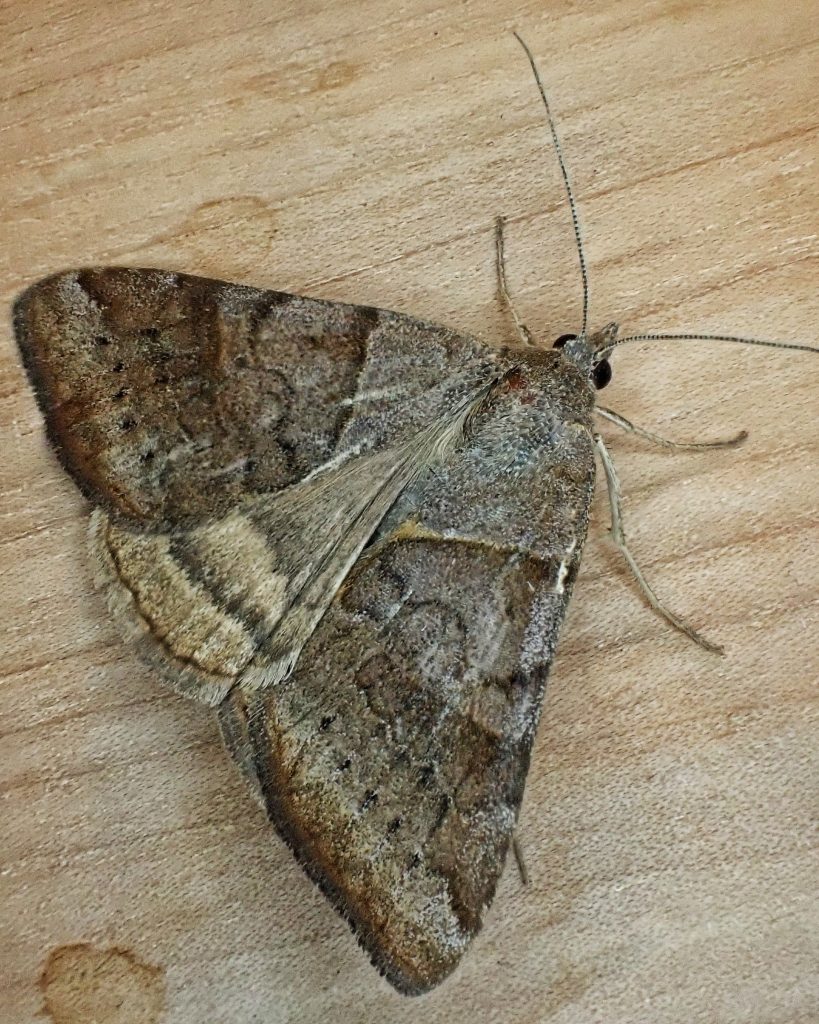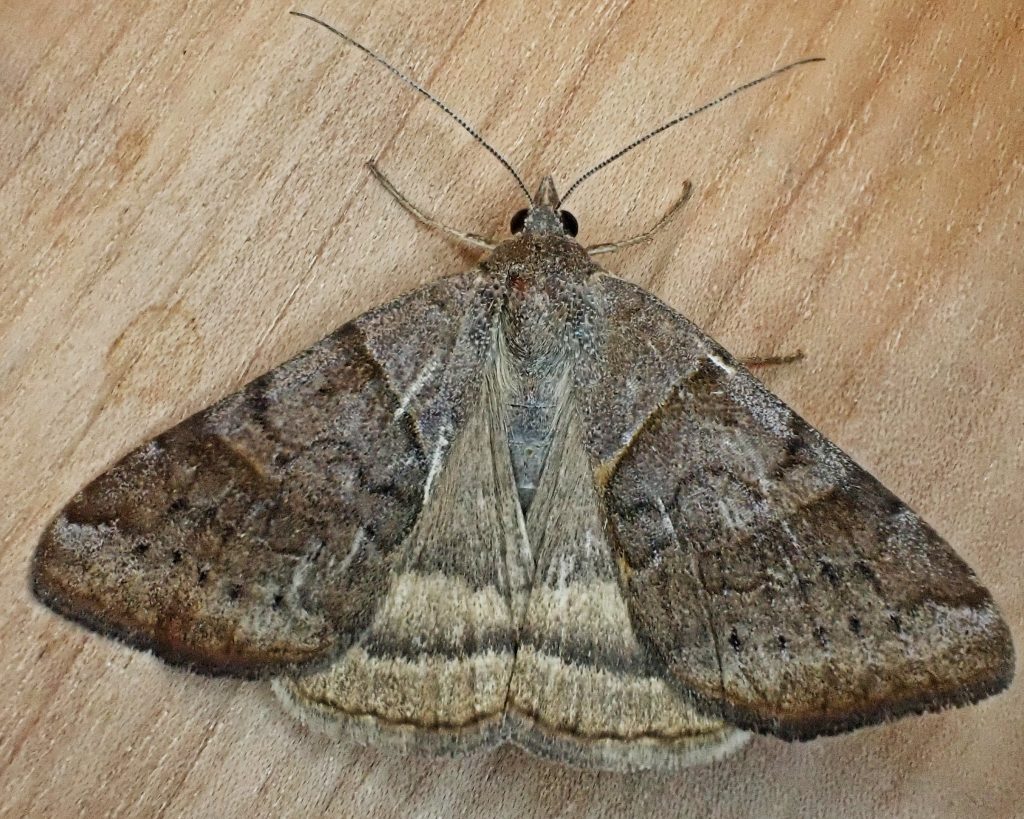
I found this handsome member of the family Erebidae on the same trip to the Vancouver Lake bottoms that I found the Eastern tailed blues. In fact I was following the white lawn clover growing along that section of the dike, hoping to find more of the little Cupido comyntas, when something sprang out of the reed canary grass and flew about 15’, before diving into cover. The flight was odd, more like a grasshopper in the way it abruptly dropped, but also a little more zigging and zagging. I thought I’d marked the spot, but I flushed it again, thinking it was farther along the track. But the next time I was ready for it, and managed to capture it in my net.
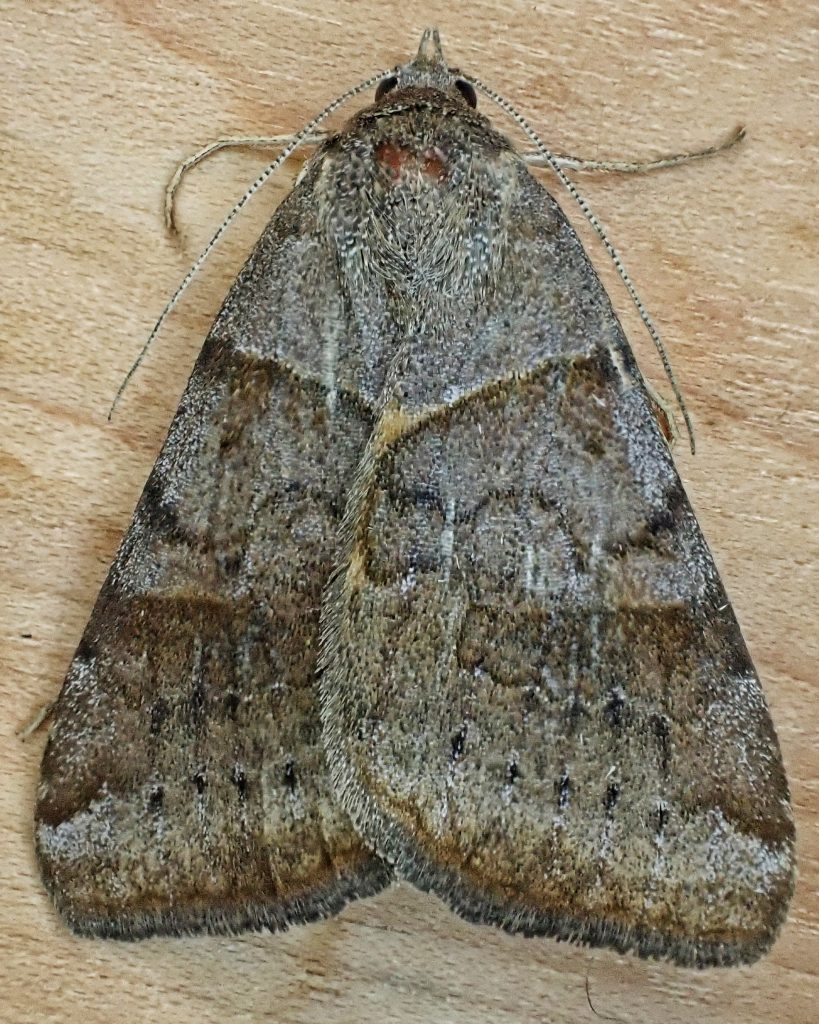
I knew immediately that I’d never seen a moth like this before, although I have to admit my first thought was that it might be an unknown-to-me Drasteria. Once I was back home, giving it time to chill in the ’fridge, I went to the Moth Photographers Group and started going through the Drasteria. But nothing seemed to go ding. Then through the Zales, and I felt like I was getting further from it, until I hit the Euclidia, and I felt like I was getting warm. The first couple Caenurgina felt like I was getting colder, and then C. crassiuscula was almost right except for the range and the dark hindwing. But Caenurgina erechtea rang the bells, and after taking and comparing photos I felt like I had my identification. But I still clicked the link to PNW Moths to see what Crabo/Peterson had to say, after which I was sure that this was C. erechtea. Just for the heck of it once I’d done it the fun way, I ran some of these photos through the Leps Fieldguide app on my phone, and it also pointed me to the forage looper moth.
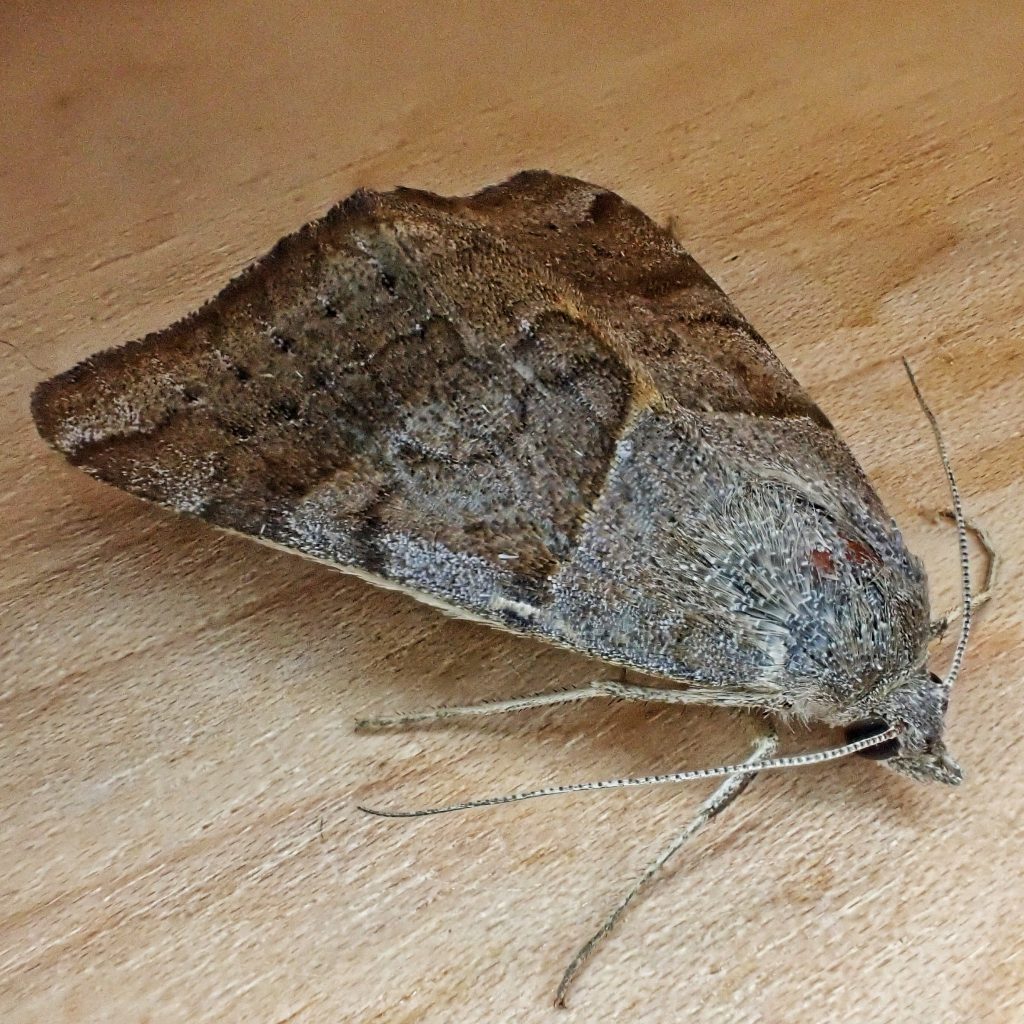
Description– “Medium-size (3.0-4.2 cm wingspan) broad-winged brown (female) or brownish-grey (male) moths. Males have two dark bars crossing the forewing, the innermost curving outward near the lower margin, but touching neither the outer band nor the lower margin of the wing. The subterminal band is reduced to a few small points except near the costa, where it forms two prominent black fused spots. The hindwing is light grey-brown with a dark sinuous subterminal band and dark terminal band. The female is dull grey-brown with the bars of the male forewing reduced to faint lines. The hindwing is also brown, and the terminal bands are much less contrasting than those of the male.” Caenurgina erechtea – University of Alberta Museums Search Site
Similar species– Although it is only found in the northeastern part of our region “In Clover Looper(Caenurgina crassiuscula) the dark AM band touches the inner margin of the forewing.” Species Caenurgina erechtea – Forage Looper – Hodges#8739 – BugGuide.Net, but they “…can be reliably sorted only by examining the structure of the genitalia” PNW Moths | Caenurgina erechtea
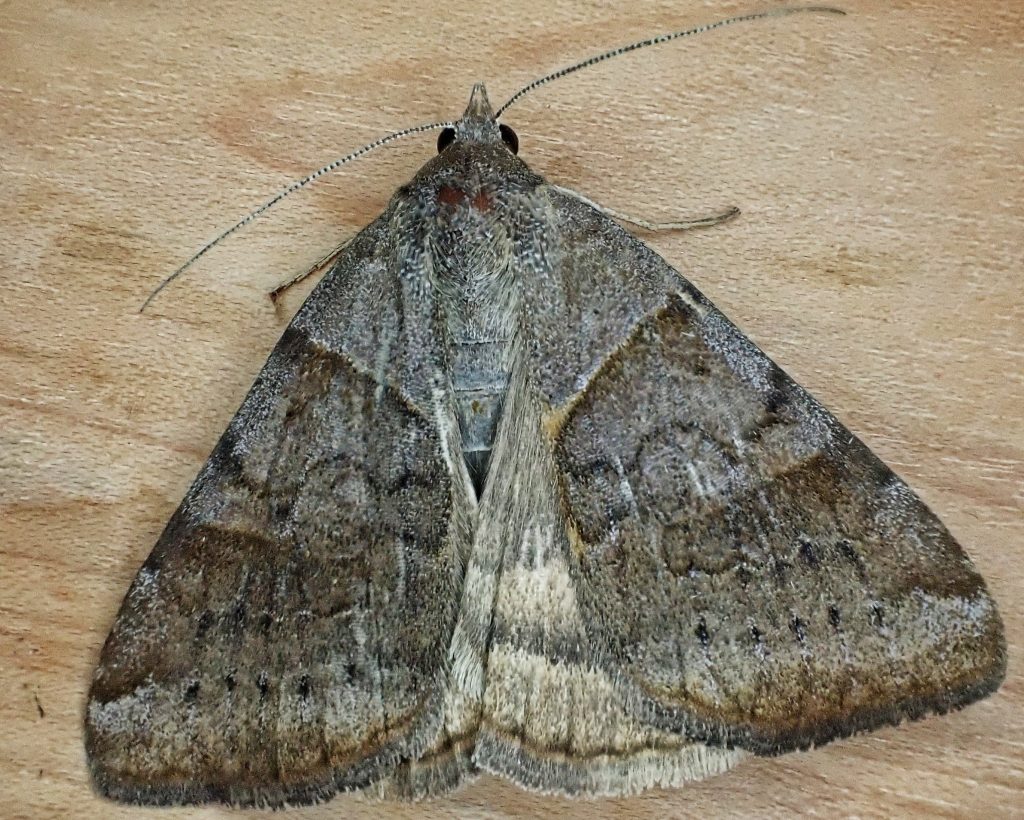
Habitat– “This species is common to abundant and widely distributed in moist open habitats throughout North America. In the Pacific Northwest, it occurs in moist grasslands, meadows, agricultural fields, and urban areas at low to high elevations both east and west of the Cascades. It is often extremely abundant in clover fields.” PNW Moths | Caenurgina erechtea
Range– Temperate North America; region wide in the PNW.
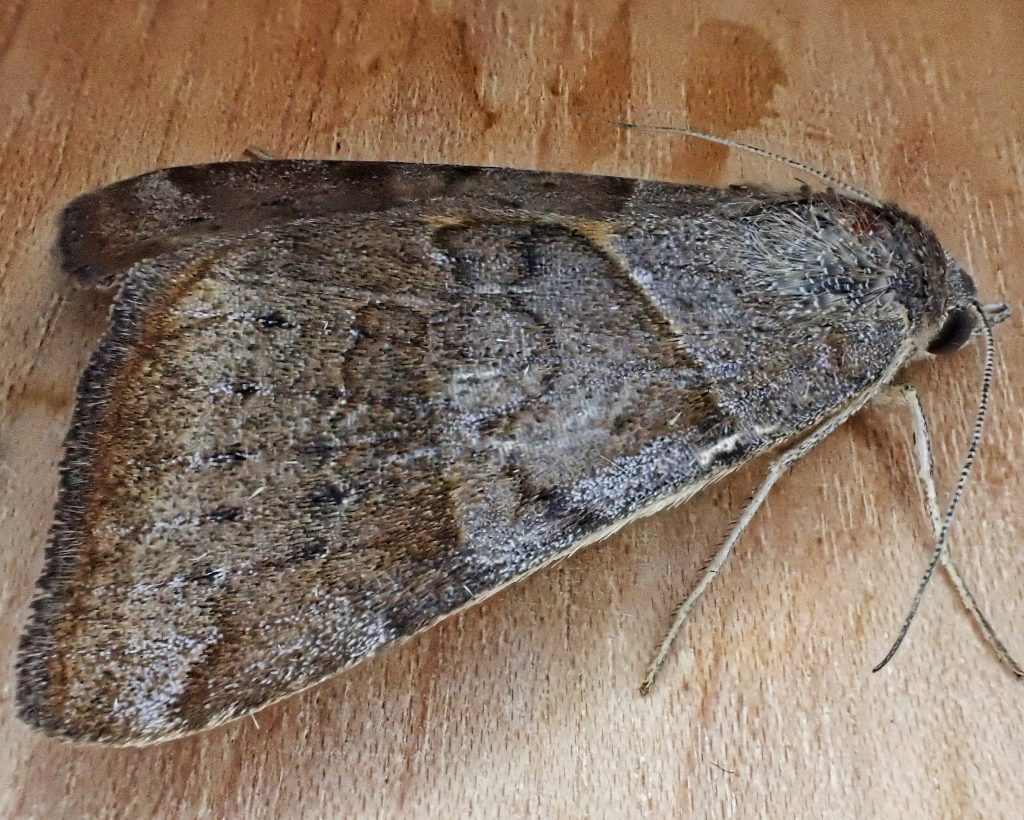
Eats– “This species is a foodplant specialist feeding on herbaceous legumes (Fabaceae), and particularly favors clovers (Trifolium spp.).” PNW Moths | Caenurgina erechtea
Eaten by– The Chalcidoid wasps Euplectrus platyhypenae and Trichogramma minutum utilize the larvae as a primary larval host; adults and larvae are presumably prey upon by insectivores of all classes.
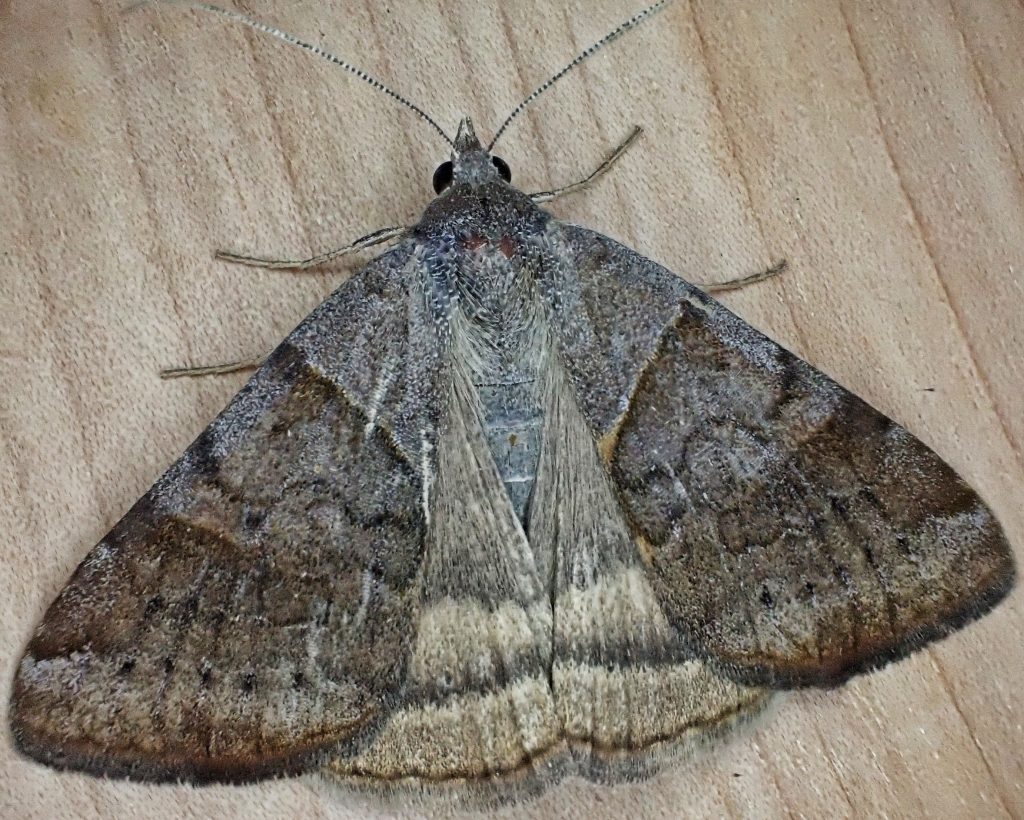
Adults active– “A spring flight of small individuals peaks in late April and early May. The summer flight is longer, lasting from early June through September. Most records are from July. This species is both diurnal and nocturnal. Both sexes come to lights.” PNW Moths | Caenurgina erechtea
Life cycle– Appears to be at least double-brooded. Likely overwinters as a pupa, based on how early it flies in the spring.
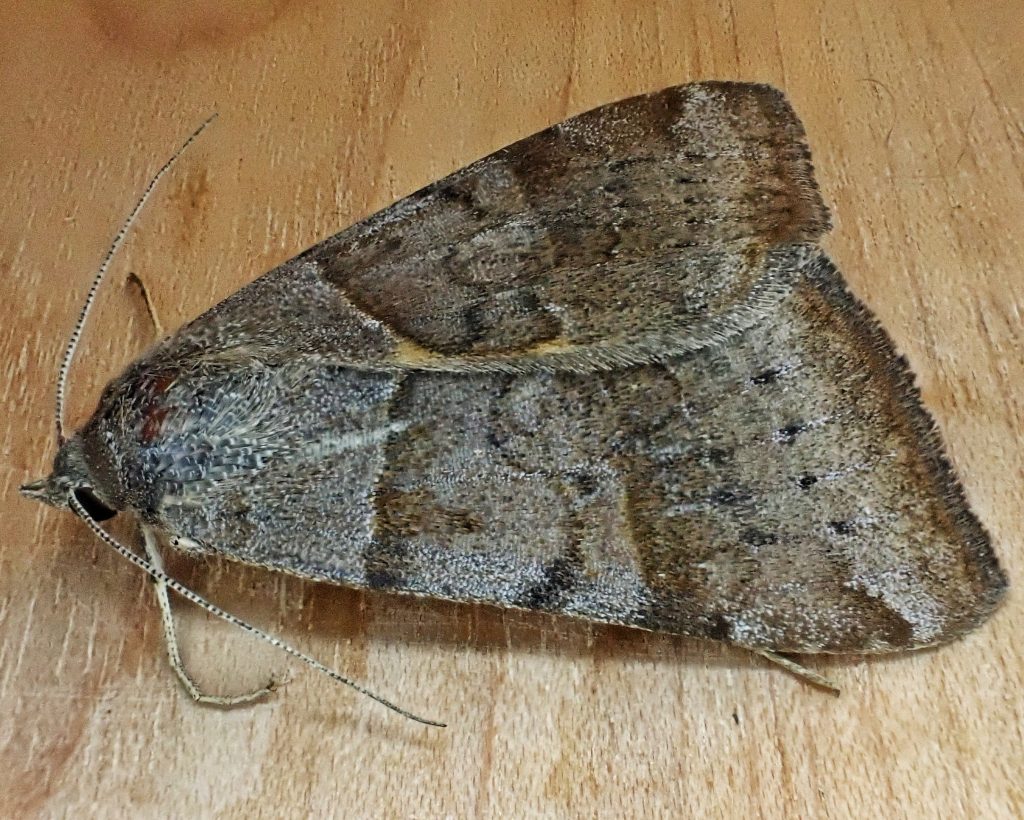
Etymology of names– Caenurgina is from the Greek word for ‘newly made’, and seems to be JH McDunnough’s play on the name Caenurgia, which also means ‘newly made’, and which seems to have been a somewhat tongue-in-cheek appellation given by Francis Walker to a closely related genus some 80 years before. The specific epithet erechtea may be from the Greek word for ‘rend/break/shiver’, but I cannot verify that, nor ascertain what it may refer to.
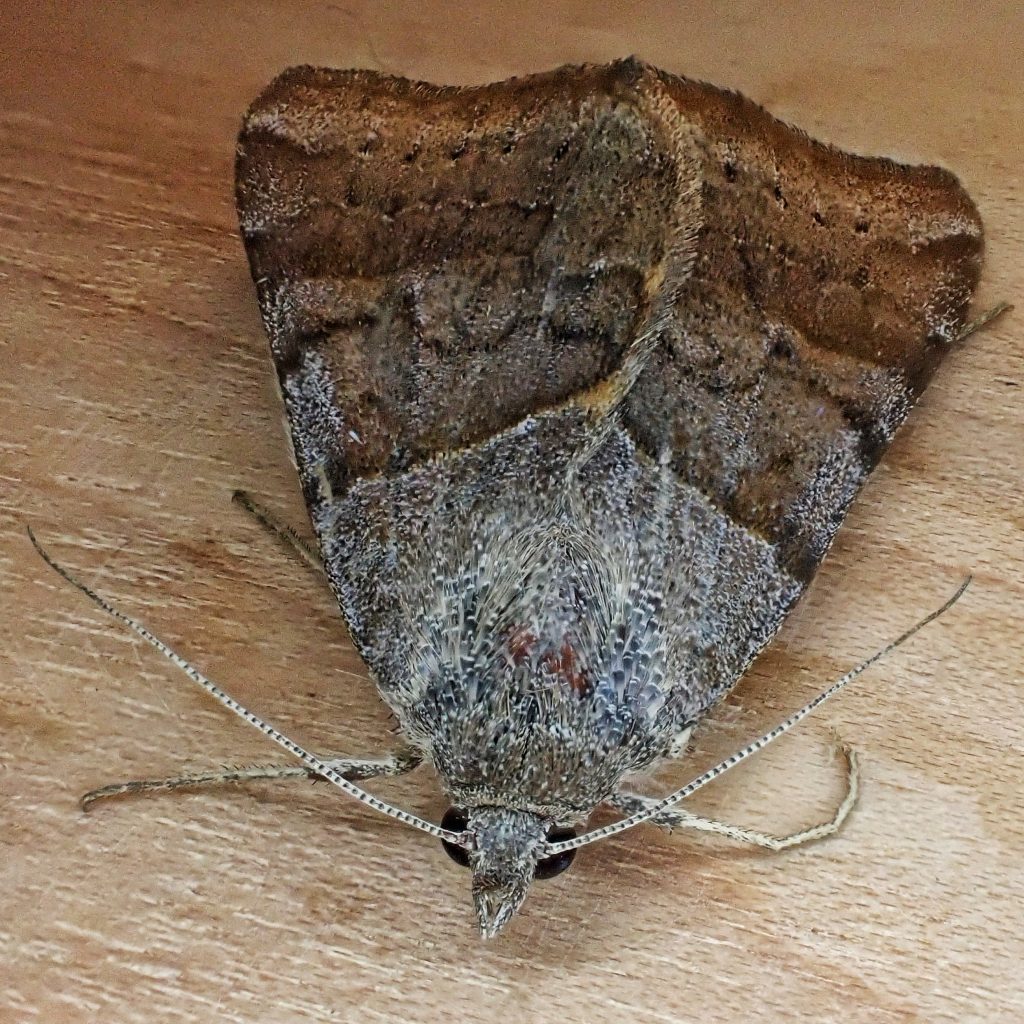
PNW Moths | Caenurgina erechtea
Species Caenurgina erechtea – Forage Looper – Hodges#8739 – BugGuide.Net
http://mothphotographersgroup.msstate.edu/species.php?hodges=8739
Caenurgina erechtea – University of Alberta Museums Search Site
